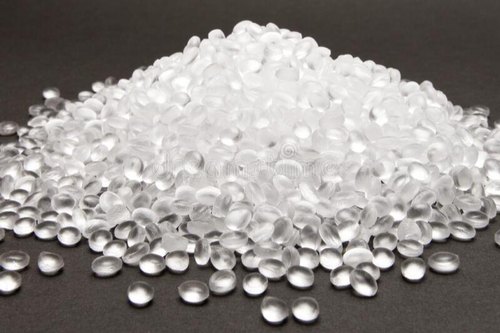The HS code for "polymers of ethylene" is 3901
Ethylene Polymers: A Comprehensive Overview of Imports, Exports, and Applications in India
Ethylene polymers, a versatile category of chemical compounds, play a significant role in various industries worldwide. In India, the demand for these polymers has been steadily increasing due to their wide-ranging applications in packaging, construction, agriculture, and more. This article provides an in-depth understanding of ethylene polymers, their types, sources of import, exporting nations, and their diverse uses in India.
What Are Ethylene Polymers?
Ethylene polymers are synthetic polymers derived from ethylene, a hydrocarbon compound. They are widely appreciated for their lightweight, durability, and chemical resistance, making them ideal for various industrial applications. Some common forms of ethylene polymers include polyethylene (PE), polyvinyl acetate (PVA), and ethylene vinyl acetate (EVA).
These polymers are classified based on their molecular structure and density, resulting in various grades suitable for specific purposes. The primary types of polyethylene include:
- High-Density Polyethylene (HDPE): Used in rigid packaging, pipes, and containers.
- Low-Density Polyethylene (LDPE): Commonly used in flexible packaging and agricultural films.
- Linear Low-Density Polyethylene (LLDPE): Utilized for stretch films and other flexible applications.
Types of Ethylene Polymers Imported in India
India imports various ethylene polymer grades to meet its growing demand. The primary types of ethylene polymers imported include:
- Polyethylene (PE): HDPE, LDPE, and LLDPE form the bulk of polyethylene imports, catering to packaging, agriculture, and construction industries.
- Ethylene Vinyl Acetate (EVA): Used in footwear, photovoltaic panels, and adhesives.
- Ethylene Propylene Rubber (EPR): Employed in automotive parts and electrical insulation.
- Cross-Linked Polyethylene (XLPE): Utilized in electrical cables and heat-resistant applications.
These imports help India bridge the gap between domestic production and the rising demand in various sectors.
Major Exporting Countries of Ethylene Polymers to India
India relies on several countries for its ethylene polymer imports. The key exporters include:
- Saudi Arabia: A leading supplier, offering HDPE, LDPE, and LLDPE due to its robust petrochemical industry.
- United States: Supplies a wide range of polyethylene grades, including specialized variants like EVA and EPR.
- South Korea: Known for its high-quality EVA and LLDPE exports.
- United Arab Emirates: Provides polyethylene products, capitalizing on its proximity to India and strong production capacities.
- Thailand and Singapore: Emerging as significant suppliers of high-performance polyethylene products.
These nations benefit from advanced polymer manufacturing technologies and abundant raw material availability, ensuring a steady supply to India.
Uses of Ethylene Polymers in India
Ethylene polymers are indispensable in various industries across India due to their adaptability and functional properties. Here are some of their prominent applications:
1. Packaging Industry
- Flexible Packaging: LDPE and LLDPE are widely used for manufacturing plastic bags, films, and pouches.
- Rigid Packaging: HDPE is utilized in containers, bottles, and caps for food and beverage storage.
2. Agriculture
- Greenhouse Films: LDPE is employed to create protective covers for crops.
- Drip Irrigation Systems: HDPE pipes are used for efficient water distribution in agriculture.
3. Construction Sector
- Waterproofing Membranes: LLDPE and XLPE are used to manufacture waterproofing sheets.
- Piping Solutions: HDPE pipes are favored for their durability and resistance to corrosion.
4. Automotive Industry
- Interior Components: EPR is used for dashboards, seals, and insulation.
- Fuel Tanks: HDPE is used to make lightweight and durable fuel tanks.
5. Energy Sector
- Solar Panels: EVA is a critical component in photovoltaic cells, ensuring durability and performance.
- Cables and Insulation: XLPE is used for manufacturing heat-resistant electrical cables.
6. Consumer Goods
- Footwear: EVA is employed to produce lightweight and comfortable shoe soles.
- Household Items: HDPE and LDPE are used to manufacture everyday products like buckets, bins, and kitchenware.
Challenges and Future Outlook
While the import of ethylene polymers supports various industries, India faces challenges such as reliance on foreign suppliers, fluctuating raw material costs, and environmental concerns related to plastic waste.
To address these issues, India is focusing on boosting domestic polymer production through investments in petrochemical infrastructure and research into sustainable alternatives. Efforts are also being made to promote recycling and develop biodegradable polymers.
With its expanding industrial base and a push towards self-reliance, India is poised to become a significant player in the global polymer market.
Conclusion
Ethylene polymers are essential for India's industrial and economic growth. By importing high-quality polymers from leading global producers, the country meets the demands of sectors like packaging, agriculture, construction, and energy. However, as India strides towards sustainability and self-reliance, the focus on innovation and eco-friendly solutions will define the future of the ethylene polymer industry in the country.





